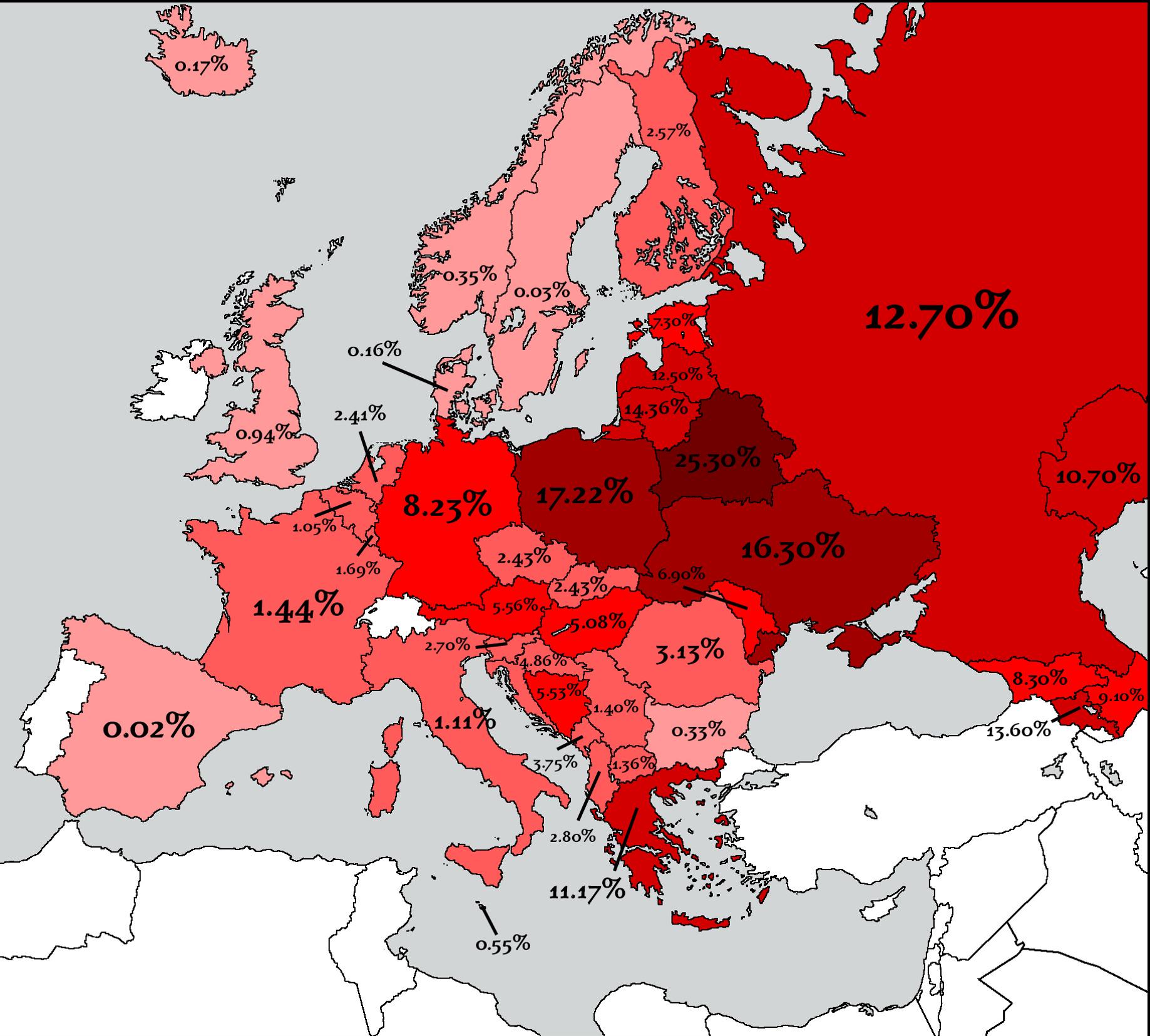Countries That Lost the Most People in WW2 Map


Marcus Rodriguez
Historical Geography Expert
Marcus Rodriguez specializes in historical cartography and geographic data analysis. With a background in both history and geography, he brings unique...
Geographic Analysis
What This Map Shows
The map titled "Countries That Lost the Most People in WW2" provides a stark visual representation of the human cost of one of the deadliest conflicts in history. It highlights the countries that experienced the highest population losses during World War II, illustrating not only the number of lives lost but also the profound impact on national demographics and societal structures. From battlefield casualties to civilian deaths due to war-related famine and genocide, this map serves as a powerful reminder of the war's devastating toll.
Transitioning from the visualization itself, let’s delve deeper into the actual topic: the massive population losses experienced by various nations during this tumultuous period.
Deep Dive into Population Losses During WW2
World War II was marked by unprecedented levels of violence and destruction, leading to staggering population losses across multiple continents. It’s estimated that approximately 70-85 million people lost their lives during the conflict, which accounted for about 3-4% of the world’s population at that time. These figures encompass not only military personnel but also a significant number of civilians, with many countries bearing the brunt of these losses.
Countries like the Soviet Union, Poland, and China faced the most pronounced casualties. The Soviet Union alone is estimated to have lost around 26 million people, with military deaths accounting for about 8.7 million and civilian losses reaching an alarming 17 million. This staggering number reflects the brutal frontlines of Eastern Europe and the Holocaust, which decimated entire communities.
Poland, too, suffered immensely, with estimates suggesting a loss of approximately 6 million people, including around 3 million Polish Jews who were systematically exterminated during the Holocaust. The scale of this tragedy is hard to comprehend, as it represented a significant portion of the nation’s population at the time.
Interestingly, it is worth noting that while many countries experienced high casualty rates, the reasons behind these numbers varied significantly. For example, in China, the Second Sino-Japanese War, which extended into the broader conflict of World War II, resulted in approximately 15-20 million deaths. This included military personnel and civilians who suffered under Japanese occupation, adding a grim layer to the war's statistics.
What’s fascinating is how these losses extend beyond mere numbers; they shaped the course of history, influencing post-war reconstruction, migration patterns, and demographic shifts that are still felt today. Countries like Germany and Japan, which faced defeat, not only dealt with the loss of life but also with the long-term consequences of rebuilding their societies and grappling with their wartime actions.
Regional Analysis
When we analyze the map regionally, the impacts of World War II become even more pronounced. In Europe, the narrative is dominated by the losses in the East. The Eastern Front was the most brutal, with countries like Ukraine and Belarus experiencing catastrophic losses as part of the Soviet Union's toll. For instance, Belarus lost approximately 25% of its population during the war, showcasing the severe human cost that conflicts can impose on smaller nations.
In contrast, Western European countries like Britain and France, while still suffering losses, saw a different scale of impact. Britain, with around 450,000 military and civilian deaths, faced considerable challenges but managed to emerge from the war with its population relatively intact compared to its Eastern counterparts. The demographic changes were less drastic, but the psychological and societal impacts were profound nonetheless.
Meanwhile, in Asia, the map highlights the losses in countries like Japan and the Philippines. Japan lost about 3 million people, while the Philippines faced around 1 million casualties due to Japanese occupation and subsequent battles. The regional comparisons illustrate the varied experiences of countries depending on their geopolitical situations during the war.
Significance and Impact
Understanding the population losses during World War II is crucial for several reasons. First and foremost, it serves as a reminder of the destructive capacity of modern warfare and the human cost associated with conflict. This awareness is increasingly relevant in today’s world, where geopolitical tensions persist and the specter of conflict looms.
Moreover, the demographic shifts resulting from the war have had long-lasting implications. Countries that lost a significant portion of their population faced challenges in rebuilding their societies, economies, and cultural identities. The outflow of refugees, changes in family structures, and even shifts in political power dynamics are all rooted in the war's aftermath.
As we reflect on these historical losses, it’s essential to consider how societies have strived to remember and honor those who perished. Memorials, educational programs, and historical research play vital roles in ensuring that the lessons of the past are not forgotten, helping to foster a more peaceful future.
In conclusion, the map depicting countries that lost the most people in WW2 encapsulates a harrowing aspect of our shared history. It stands as a visual testament to the lives lost and the resilience of those who survived, reminding us of the importance of peace and understanding in our interconnected world.
Visualization Details
- Published
- August 12, 2025
- Views
- 216
Comments
Loading comments...